Why you can trust Tom's Hardware
The 32UHD144 can be optimized in many ways using the preset color gamut modes. Standard uses the full native color space, which is close to Rec.2020. Alternately, you can select Adobe RGB, DCI-P3 or sRGB and calibrate them individually.
Grayscale and Gamma Tracking
Our grayscale and gamma tests use Calman calibration software from Portrait Displays. We describe our grayscale and gamma tests in detail here.
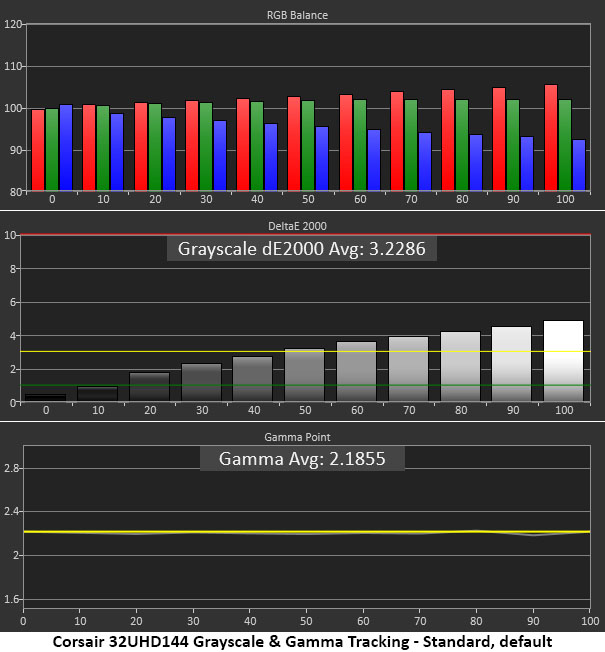
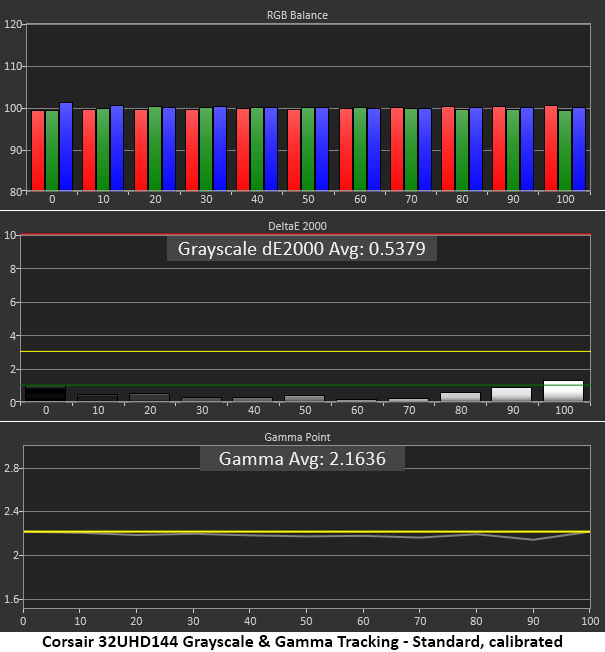
Grayscale tracking is very consistent across all picture modes. Out of the box, the 32UHD144 runs a little warm in tone, but the errors are slight and only visible above 60% brightness. Gamma tracking is about as close to perfect as a monitor can get.
Calibrating the custom color temp removes all visible errors and takes the 32UHD144 to a reference level of accuracy. Gamma gets slightly lighter on the chart, but this change cannot be seen with the naked eye. I was able to achieve the same results in every gamut mode, so I’ve only included a single before and after chart here.
Comparisons
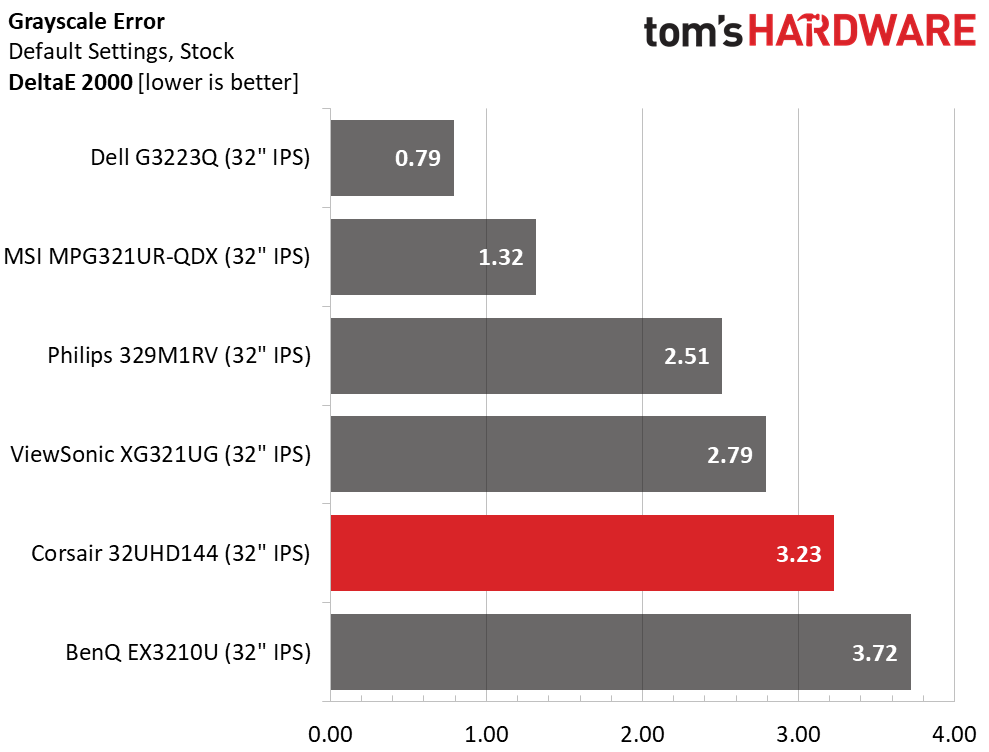
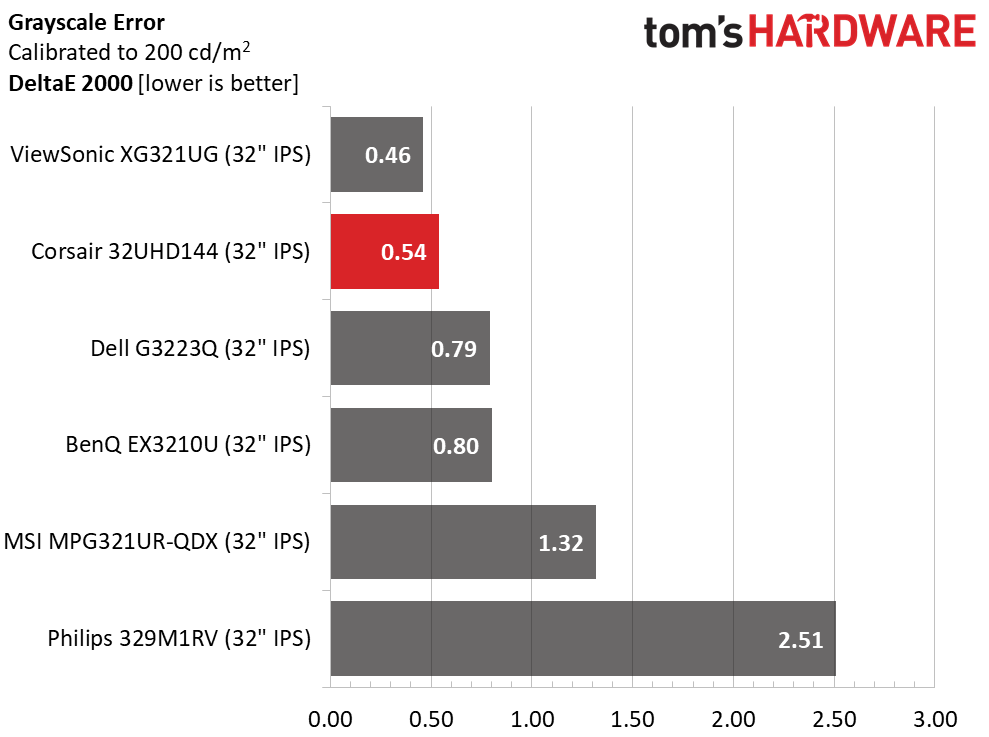

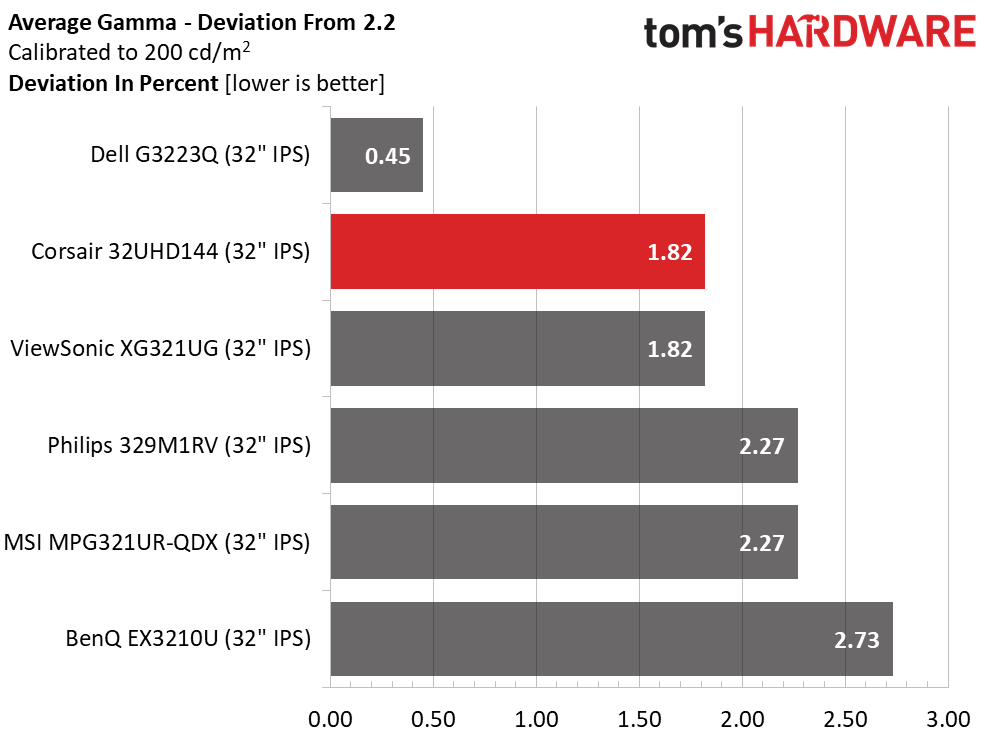
With a default grayscale error of 3.23dE, the 32UHD144 can be enjoyed without calibration. But since there is such upward potential, it makes sense to tweak a bit. I got the average error below 1dE in all gamut modes using independent RGB settings. You’ll find them in the table back on page one. The post-calibration errors for the other modes are DCI-P3 – 0.63dE, Adobe RGB – 0.58dE and sRGB – 1.06dE.
Gamma tracking is among the best in class. The range of values is super tight at only 0.06 from lowest to highest. The average value is 2.16 for a 1.82% deviation, which is also excellent. This holds true in all gamut modes.
Color Gamut Accuracy
Our color gamut and volume testing use Portrait Displays’ Calman software. For details on our color gamut testing and volume calculations, click here.
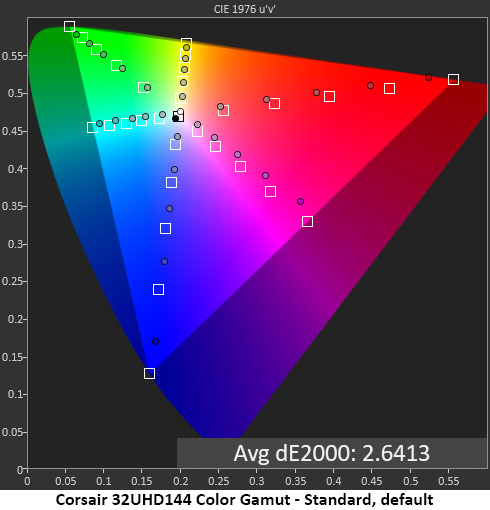
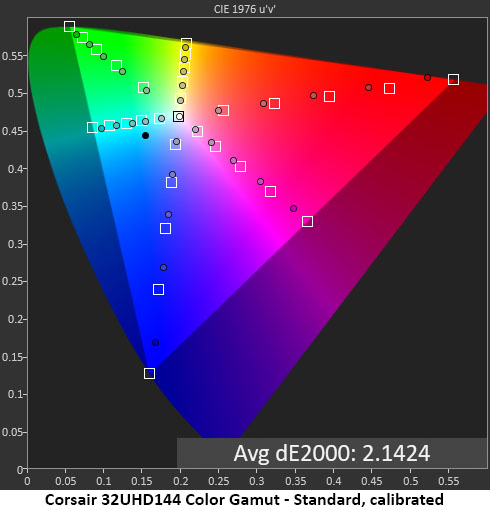
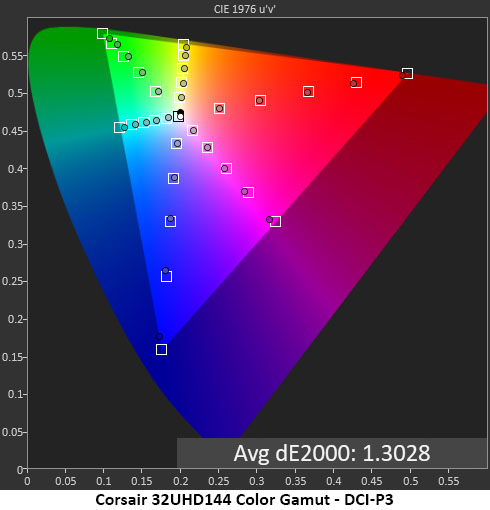
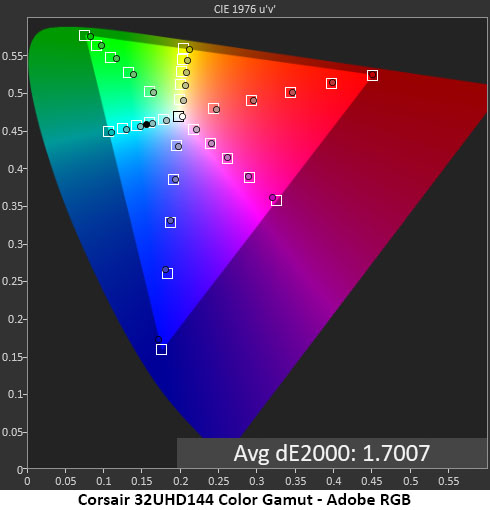
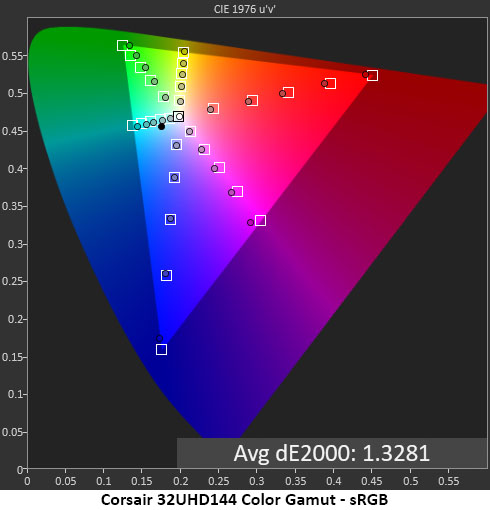
I’ve included charts showing all the 32UHD144’s gamut modes. The default measurements for Standard mode, which are set against the Rec.2020 standard, show some hue errors in red and magenta and slight under-saturation overall. Note that this is under-saturation in the Rec.2020 realm, DCI-P3 would show a general over-saturation.
If you pick a specific gamut mode, the 32UHD144 hits the marks right on the nose. You can see that every point is on target for DCI-P3, Adobe RGB and sRGB. It doesn’t get better than this.
Comparisons
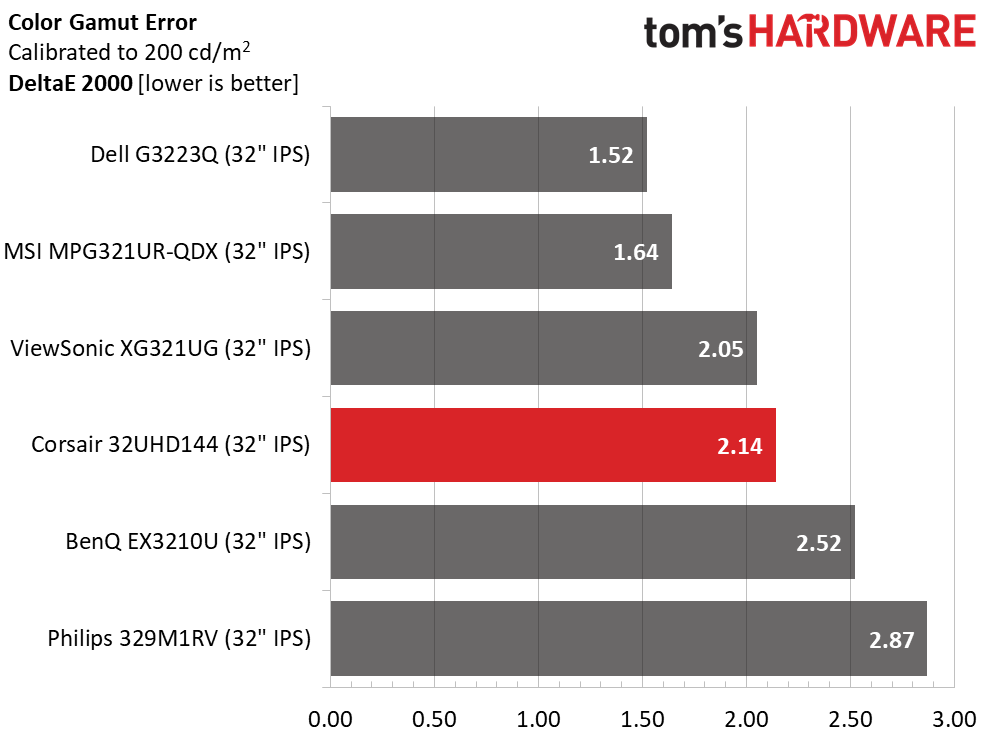
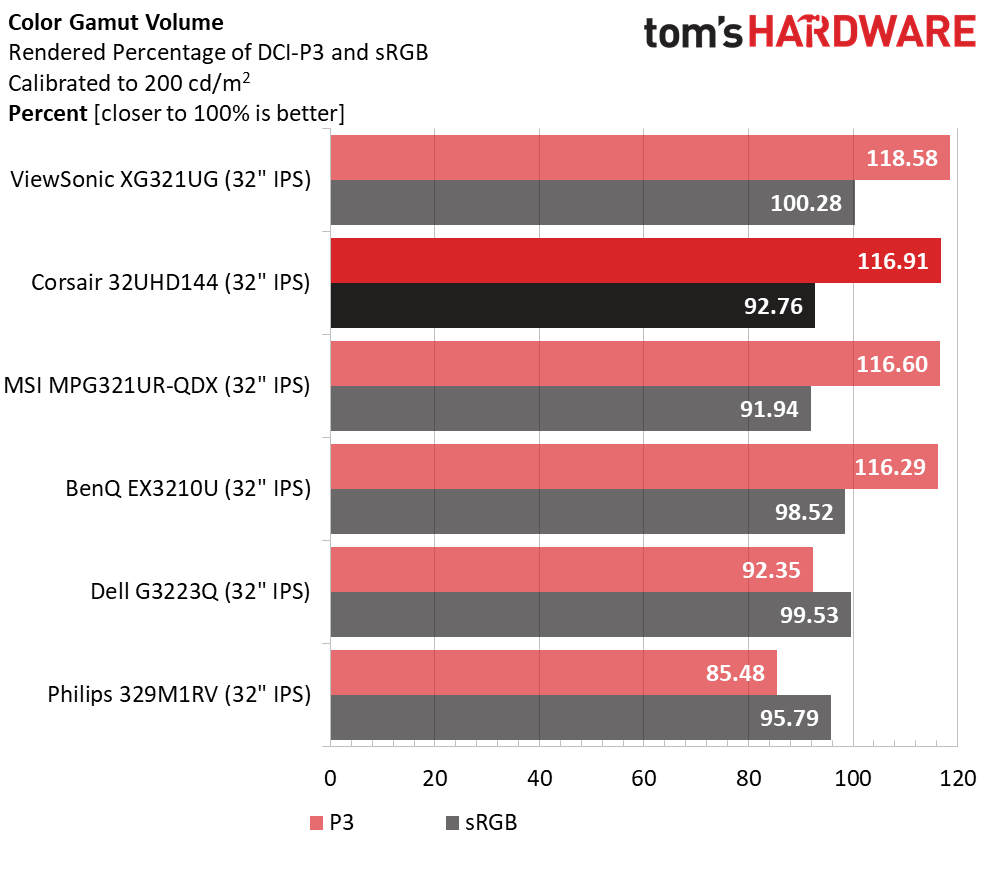
I’ve charted the error for Standard mode, which uses the 32UHD144’s full native gamut. The other color modes have even lower values. Adobe RGB is 1.70dE, DCI-P3 is 1.32dE and sRGB is 1.33dE. That result exceeds many professional monitors that cost substantially more.
The 32UHD144’s near-117% coverage of DCI-P3 should be no surprise, given that it covers 83.36% of Rec.2020. That makes it one of the most colorful monitors I’ve tested. You can get similar coverage from the BenQ, MSI and ViewSonic screens with comparable levels of accuracy.
Current page: Grayscale, Gamma and Color
Prev Page Brightness and Contrast Next Page HDR Performance
Christian Eberle is a Contributing Editor for Tom's Hardware US. He's a veteran reviewer of A/V equipment, specializing in monitors. Christian began his obsession with tech when he built his first PC in 1991, a 286 running DOS 3.0 at a blazing 12MHz. In 2006, he undertook training from the Imaging Science Foundation in video calibration and testing and thus started a passion for precise imaging that persists to this day. He is also a professional musician with a degree from the New England Conservatory as a classical bassoonist which he used to good effect as a performer with the West Point Army Band from 1987 to 2013. He enjoys watching movies and listening to high-end audio in his custom-built home theater and can be seen riding trails near his home on a race-ready ICE VTX recumbent trike. Christian enjoys the endless summer in Florida where he lives with his wife and Chihuahua and plays with orchestras around the state.
-
wifiburger "While the price at this writing is $999 ($899 without the stand), it doesn’t cost much more than other comparable products "Reply
lol, what an absurd price to ask for 4k panel
I guess I'll stay at 4k 60hz for my tvs & pc monitors forever ! there's no way I'm spending more than 300$ for a 4k panel -
cknobman It would be really nice if Toms started calling these manufacturers out for calling their monitors "HDR" with edge lit dimming zones.Reply
If you have ever seen it in practice ITS GARBAGE.
IPS panels have crap contrast ratios.
So regardless of what else is available, this monitor is fake HDR and way too expensive.
Should be no more than $500. -
Makaveli Replywifiburger said:"While the price at this writing is $999 ($899 without the stand), it doesn’t cost much more than other comparable products "
lol, what an absurd price to ask for 4k panel
I guess I'll stay at 4k 60hz for my tvs & pc monitors forever ! there's no way I'm spending more than 300$ for a 4k panel
Compared to what?
what other 4k panels offer the same features for alot less?
keith12 said:I think the lack of RGB should be a Pro, not a Con! ;)
Agreed!! -
PEnns Enough already with the lack of RGB (aka unicorn vomit) being a con!!Reply
For many it is a big plus!! -
10tacle A lot of people out there like to know who makes the panel for monitor reviews (LG, Samsung, and AU Optronics being the top three). Can that be included in future reviews?Reply -
truerock No speakers! No LED lights!Reply
Huge double bonus.
I always subtract a lot of points for any monitor with speakers inside of it. -
pitzkale No RGB? No Speakers? Straight to the top of my monitor shortlist!Reply
This is probably the only monitor in this category that doesn't have these added features tacked in for no reason.
If I can splurge on a monitor like this you better believe I have decent speakers and can decide for myself if I add RGB to my setup. -
Alvar "Miles" Udell I haven't seen an update, but there is now an A variant of this monitor with the only difference being a cheaper stand instead of premium aluminum for $150 less.Reply